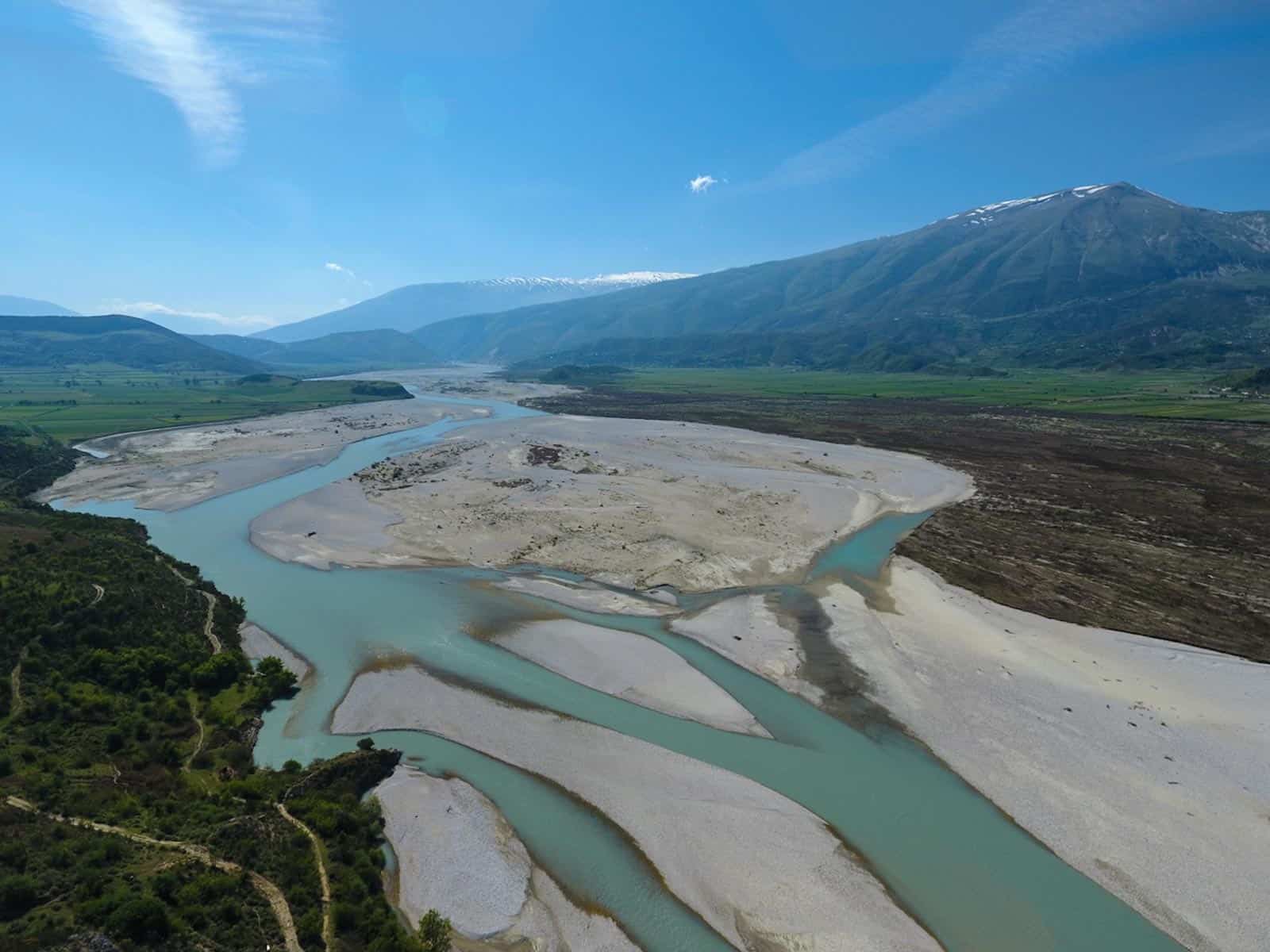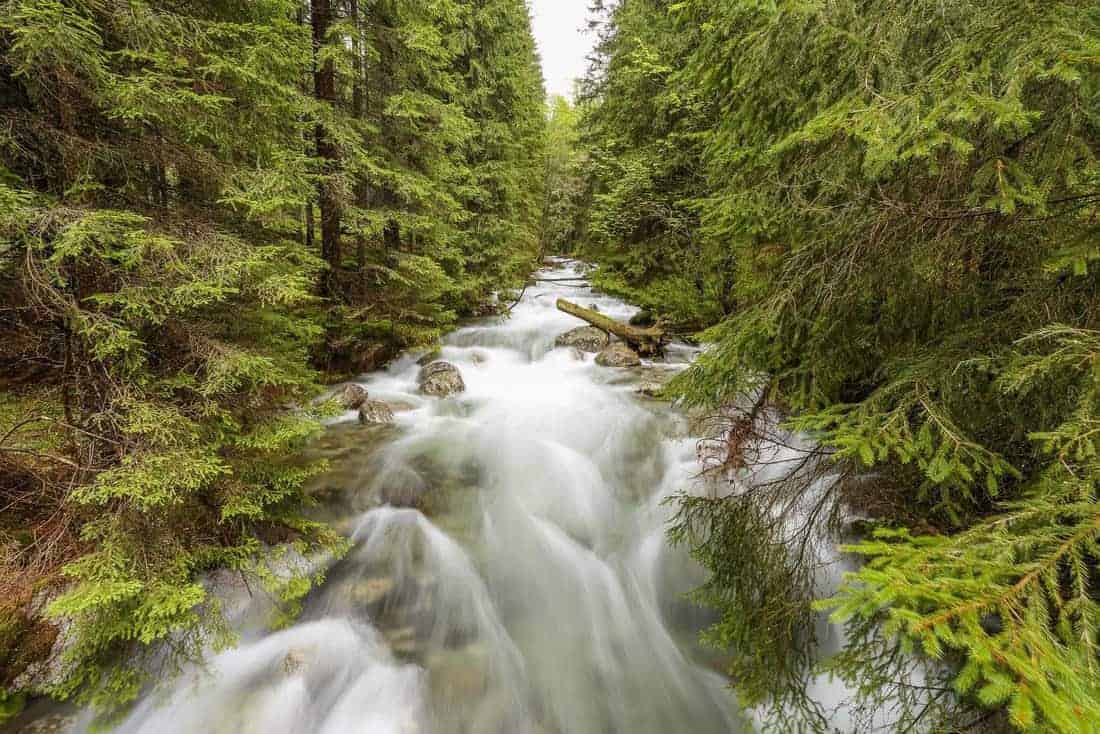Help saving the Blue Heart of Europe
The Balkans between Slovenia and Albania host some of the last wild rivers in Europe. About 80% of this region’s rivers are considered healthy and free flowing, unlike most waterways in Central Europe. Because of that and its rich culture, history and ecology, the Balkans are also described as the “Blue Heart of Europe”. However, these pristine rivers are threatened by an incredible amount of dam buildings and proposals. More than 3 000 hydropower dams are currently planned or built in the Balkans. The construction of hydropower projects often leads to severe interferences or even destruction of ecosystems as well as the displacement of communities. Furthermore, most of these damming projects and the accompanying damming and diverting of waterways will just produce little energy output. About 91% of the proposed projects in the Balkans would generate less than 10 megawatts, according to Patagonia. These dam constructions would also have significant consequences to the surrounding communities’ drinking water access. Furthermore, about a third of these dammed rivers run through the many National Parks of the Balkans. Consequently, these projects in the Balkans lead to a local and gobal outcry to stop the destruction of the Blue Heart of Europe.
Please also read: Why rivers should be wild, not dammed
Patagonia launches Blue Heart campaign to save wild rivers in the Balkans
The clothing brand Patagonia recently launched their Blue Heart campaign to raise awareness to the threats to the Blue Heart of Europe. The campaign will launch a petition and a full documentary in April. It tries to raise awareness to these controversial hydropower developments in the Balkans. Patagonia founder Yvon Chouinard said:
“I believe this wild place requires and deserves protection. The company has joined forces with the local communities and NGOs protesting the development. It’s a waste of money and a moral travesty that some of the world’s largest financial institutions have embraced this outdated and exploitative technology and are financing new dams in some of the last wild places in Europe. This is a fight too important to ignore.”
The European Wilderness Network includes WILDRivers, such as part of the Belá WILDRiver in Slovakia. We support Patagonia’s and Balkan Rivers effort to raise awarness for the destruction of Europe’s Blue Heart!
The Vjosa River – one of Europe’s last undammed rivers
The Vjosa River in Albania is undammed and free flowing along its entire 270 kilometers long course from Greece to the Mediterranean. Canyons and braided river sections, islands, oxbows and meandering stretches characterise the river. In some sections the riverbed expands over more than 2 km in width. Almost all the Vjosa river tributaries are intact and free-flowing as well, creating a unique and rare river network.
The main source of the Vjosa River is near the Greek village of Vouvoussa. In Greece the river is named Aoos. It flows into the Adriatic Sea just north of the Narta lagoon, one of the biggest and ecologically richest lagoons of Albania. The Narta lagoon is protected as a Managed Nature Reserve. The meandering lower part of the Vjosa opens up into a valley with extensive wetlands. These wetlands provide habitats for spawning fish and migratory birds. The whole drainage area of the Vjosa in Greece and Alabnia is about 6 700 km² large. The average discharge of the river into the sea is about 204 m³/sec.
The diverse and pristine Vjosa river ecosystems
The Vjosa river system is seen as of the last intact large river systems in Europe. It hosts various different ecosystems, from narrow gorges in the upper part to wide braided river sections in the middle part and a near-natural delta at the Adriatic Sea. However, there is not much scientific knowledge about the Vjosa, its biodiversity and natural dynamic processes. Only a handful of studies are available so far. Nevertheless, these few studies prove the importance of the river valley as Albania’s biodiversity hotspot.
The free flowing river provides habitat for various migratory fish species. For example the critically endangered European eel (Anguilla anguilla), or the sub-endemic Ohrid loach (Cobitis ohridana). The area also provides breeding ground for birds, such as the Stone curlew (Burhinus oedicnemus) or the little ringed plover (Charadrius dubius). The near threatened otter also finds a home there. The undisturbed morpho-dynamic processes with its huge sediment shifts lead to constant natural regeneration and change of these river habitats. The large and steep riverbanks offer breeding grounds for thousands of Sand martins (Riparia riparia), Kingfishers (Alcedo atthis) and Bee-eaters (Merops apiaster).

Large gravel banks with pioneer vegetation, side arms and islands, oxbows, ponds and alluvial forests with willows and plane trees (Platanus orientalis) are characteristic for the braided Vjosa river system. The floral biodiversity of the Vjosa ecosystem hosts a variety of endemic and endangered species, in particular the upper river section. Mixed Oak forests and Strawberry trees (Arbutus andrachne) characterise the lower valley. The Vjosa valley is the only habitat for Strawberry trees in Albania.
Social and cultural Values of the Vjosa river
The Vjosa river plays an important role in the daily lives of the people living in its surroundings. The river terraces provide fertile land for agriculture and farming. Fishing is another vial part of the local economy. Tourism on the Vjosa and its tributaries is increasing in the last years. In particular activities, such as rafting, canoeing, kayaking and swimming. Many small-scale businesses and eco-tourism companies in the area based their work and existence on the untouched and free-flowing river.
Scientific proof to underline the uniqueness of the Vjosa river ecosystems
A group of 30 international scientists from various fields is working on bridging the knowledge gap of the Vjosa river ecosystems. They conducted various scientific projects in the area of the proposed Poçem dam during in April 2017. The findings of the researcher’s work proofed that the complexity and sheer size of the river ecosystem as well as its dynamic processes are one of the last remaining ones with this quality in Europe. Most of the species and habitats have been long lost in other parts of Europe. This can be lead back to river regulations and dams. This one week of research in April 2017 initiated an extensive 3-year research program that is currently in preparations.
This scientific work on the Vjosa river is in particular important as the river is currently threatened by a number of dam proposals. The Vjosa is not protected itself but is the boarder for several protected areas, among others three National Parks. This results in growing pressure for development. Furthermore, there is no bilateral management plan for the entire river basin. This gives investors and energy companies the “golden” opportunity to develop hydropower projects in the valley. There are intentions to build about 38 hydropower plants in the entire Vjosa catchment. 6 of them are on the Greek side of the catchment, one, the Pigai Dam, is already in operation. The proposed projects on Albanian territory are along the Vjosa main channel as well as on the river’s tributaries. 4 of the tributaries projects are already finished while another 4 are under construction right now. Every single one of these dams would destroy the unique ecological value of the Vjosa river ecosystems. Every dam would significantly alter the river’s hydrological regime and its natural sediment transport.

Support the protection of Vjosa river
The campaign “Save the Blue Heart of Europe“, launched by a coalition of NGOs, tries to raise awareness about the “imminent dam craze on the Balkan peninsula and to spare the most valuable rivers and river stretches from destruction”. Together with local communities, scientists and supporters from all over Albania the campaign wants to get the Vjosa river get designated as a National Park (IUCN category II). This protection should preserve the river for the benefit of nature and for the people of the Vjosa valley. This status should also sustain the river’s potential for sustainable socio-economic development. The campaign also demands the termination of all the dam projects along the river and its tributaries to keep the ecosystem intact.
The European Wilderness Society helps and protects the last remnants of free flowing WILDRivers of Europe as part of the European Wilderness Network. Our network currently includes part of the WILDRivers in Uholka-Shyrokyy Luh Wilderness of Ukraine and Stara Reka WILDRiver embedded in the Central Balkan Wilderness. The Vjosa river as well as many other rivers in the Balkans, the Blue Heart of Europe, are potential candidates, like the Tagliamento in Italy, to become part of our network.







